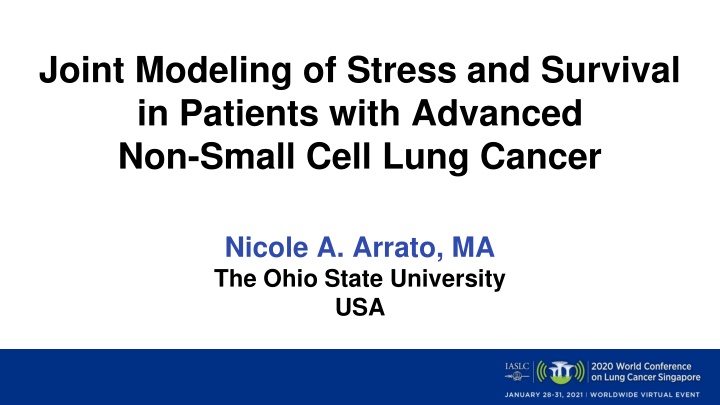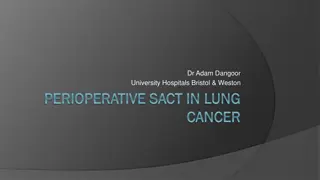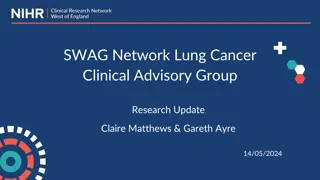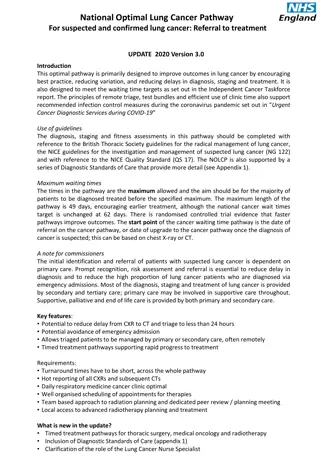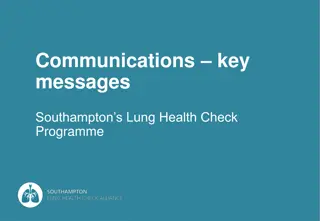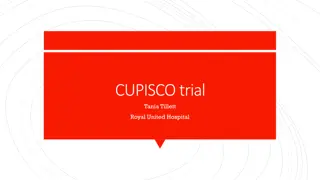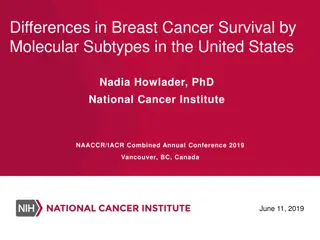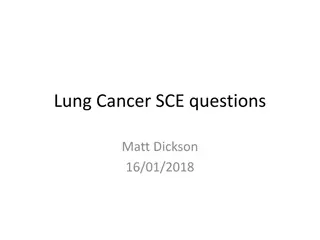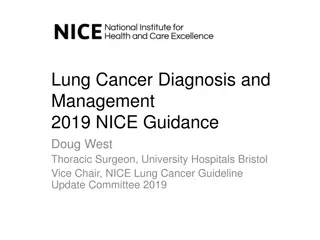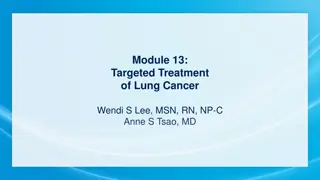Joint Modeling of Stress and Survival in Lung Cancer Patients
This study examines the impact of stress trajectories on psychological well-being and survival in patients with advanced non-small cell lung cancer. The research involves a cohort study of 157 patients, analyzing stress levels over time and its correlation with patient outcomes. Results indicate significant fluctuations in stress levels post-diagnosis, with key insights on factors influencing stress and survival rates.
Download Presentation

Please find below an Image/Link to download the presentation.
The content on the website is provided AS IS for your information and personal use only. It may not be sold, licensed, or shared on other websites without obtaining consent from the author.If you encounter any issues during the download, it is possible that the publisher has removed the file from their server.
You are allowed to download the files provided on this website for personal or commercial use, subject to the condition that they are used lawfully. All files are the property of their respective owners.
The content on the website is provided AS IS for your information and personal use only. It may not be sold, licensed, or shared on other websites without obtaining consent from the author.
E N D
Presentation Transcript
Joint Modeling of Stress and Survival in Patients with Advanced Non-Small Cell Lung Cancer Nicole A. Arrato, MA The Ohio State University USA
Disclosures I do not have any relevant financial relationships to disclose.
Background Lung cancer: highest psychological disability Understood: baseline stress continued distress, shorter survival Does psychological stress thereafter add to mortality risk?
Present Study Newly diagnosed with stage IV NSCLC observational cohort study Joint models Hypothesis: Patients trajectories of stress will adversely impact their psychological well-being and survival --Above any contribution of demographic characteristics, stress at diagnosis, prognostic variables, and treatment received
Methods N=157 patients with stage IV NSCLC Enrolled in NCT03199651 At diagnosis, completed ASCO-recommended measure for cancer stress --Impact of Events Scale-Revised (IES-R) Reassessed every 1-4 months through 24 months Survival monitored
Methods Joint statistical models Accounted for potentially informative censoring Provided simultaneous modeling of two processes --Longitudinal (psychological) --Time-to-event (survival) Control variables: age, sex, smoking status, cancer type, treatment received, marital status, education
Key Results Stress significantly decreased with time since diagnosis --IES-R scores decreased 16.9 11.1 Non-linear: Increases at 6 months Decreases at 12 months LOESS (locally estimated scatterplot smoothing) smoothed changes over time in stress (IES-R) from N=157 patients. Dashed lines indicate 95% confidence intervals.
Key Results Interactions between time and cancer treatment: non-significant --No difference in trends in stress due to cancer treatment Covariates: Education significantly associated --High school education or above less stress --7-8 points lower mean IES-R scores IES-R scores not significantly associated with survival
Conclusions First study to describe course of stress for patients with advanced NSCLC as they receive new cancer therapy More frequent IES-R significant associations with survival? Future research needed --To fully understand psychological risk factors for premature mortality from NSCLC
Take-Home Messages From diagnosis to 2-years, stress may decrease in a non-linear fashion, with a spike around the 6-month time point Patients with less than a high school education may be at risk for higher stress during lung cancer treatment Future research needed re: psychological risk factors for premature NSCLC mortality
Acknowledgments I would like to acknowledge the patients who made this research possible, the Principal Investigator Dr. Barbara L. Andersen, and the very talented biostatisticians Dr. Guy Brock and Dr. Joseph McElroy. Nicole A. Arrato, MA Nicole.Arrato@osumc.edu
